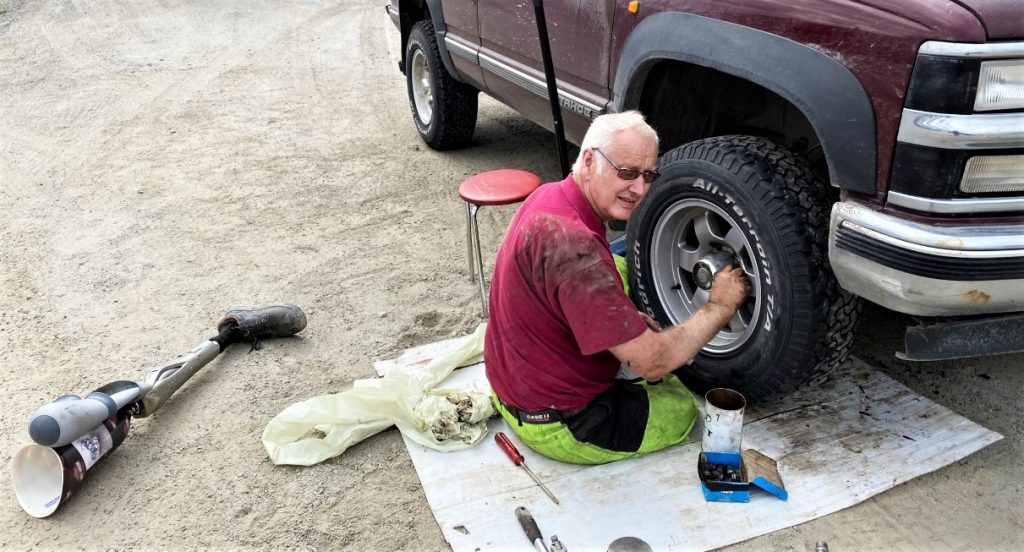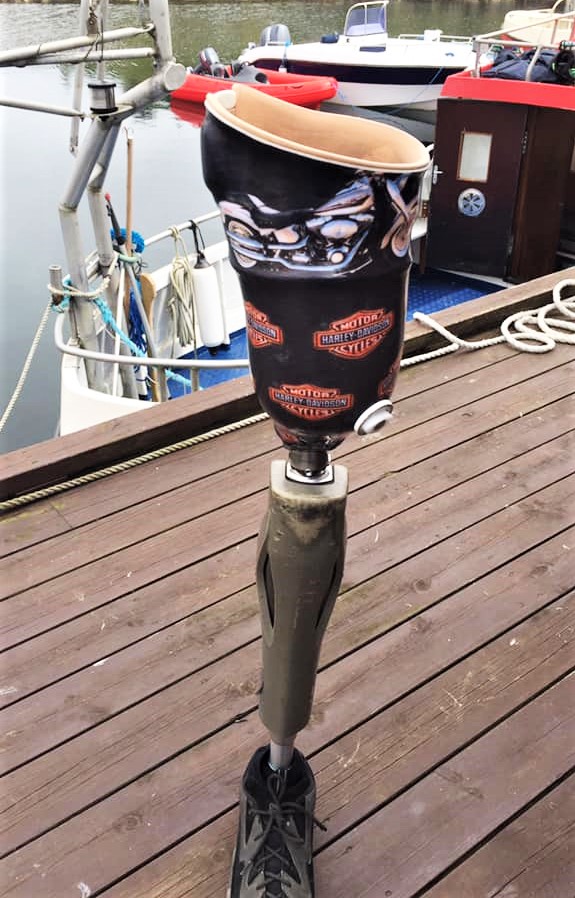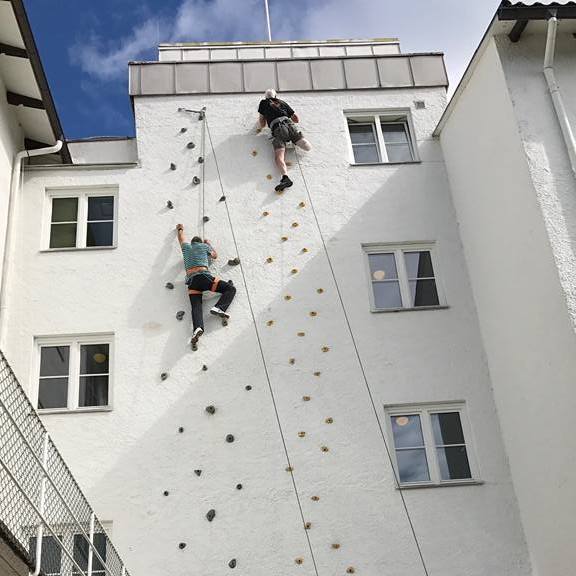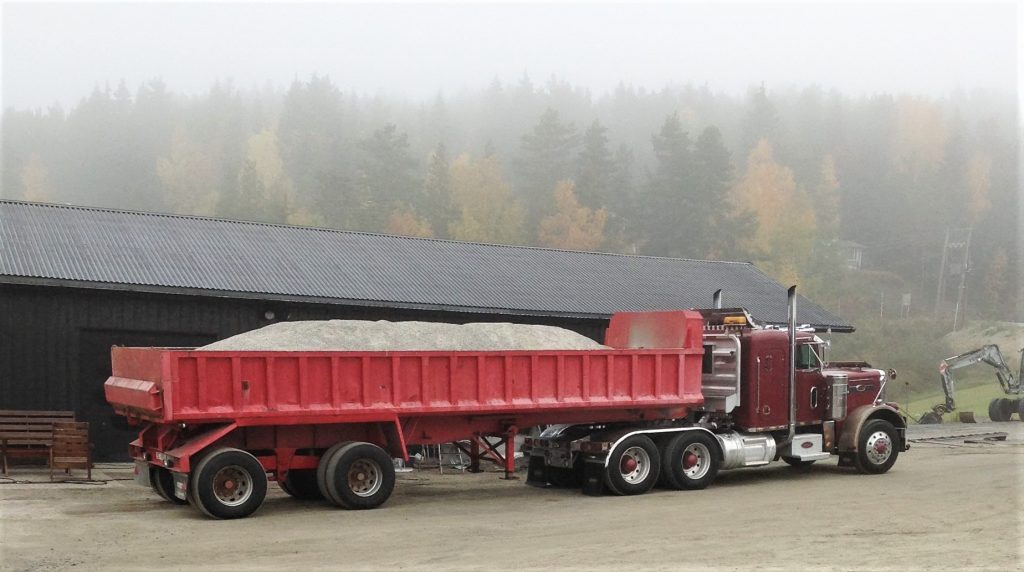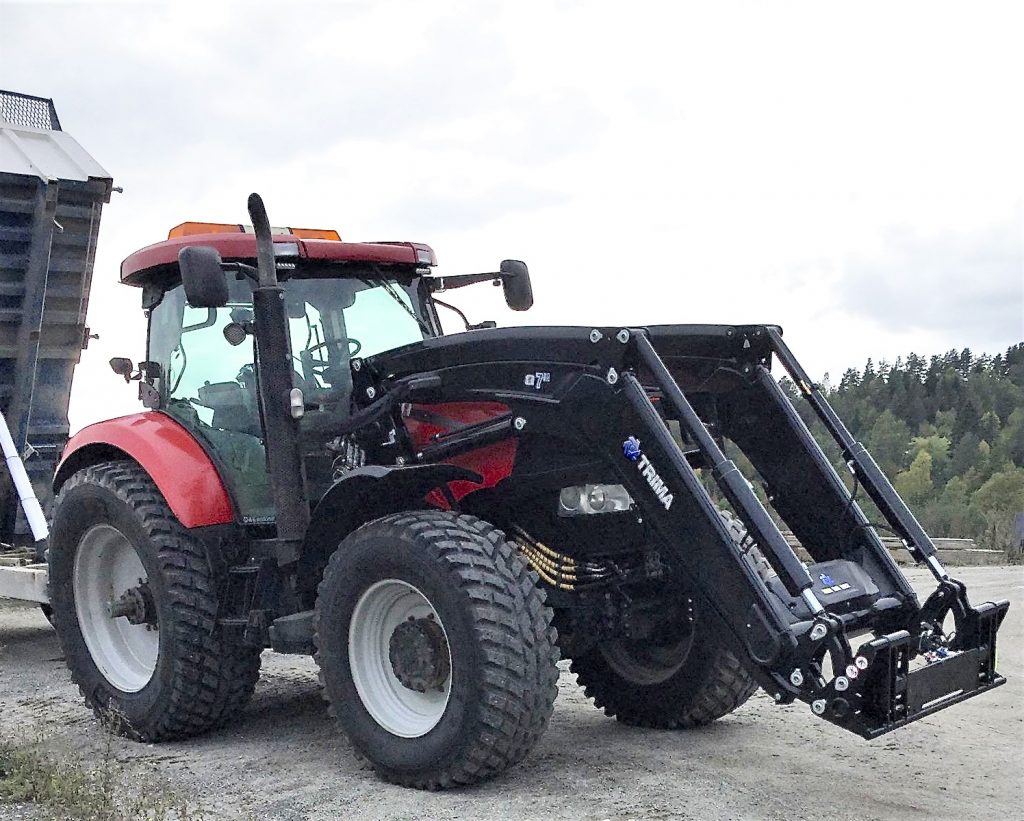– En osseointegrasjon vil forenkle alt det praktiske gårdsarbeidet
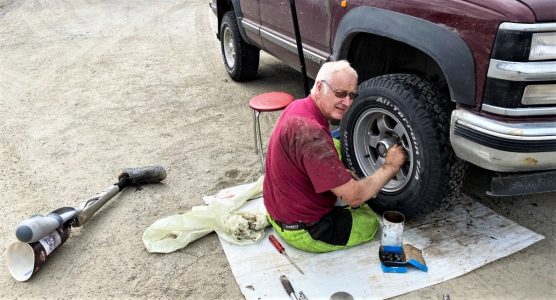
– Jeg ser fram til behandling med osseointegrasjon. Det vil lette hverdagen med traktor og lastebil. Den høye låramputasjonen gjør at hylsen jeg bruker i dag ikke er like anvendelig, sier Villy Andresen. Av Marte Nordahl. Foto: Private. Villy Andresen fra Tyristrand husker godt det skjebnesvangre fallet på den såpeglatte gårdsplassen i januar 2015. Beinet […]
– Jeg ser fram til behandling med osseointegrasjon. Det vil lette hverdagen med traktor og lastebil. Den høye låramputasjonen gjør at hylsen jeg bruker i dag ikke er like anvendelig, sier Villy Andresen.
Av Marte Nordahl. Foto: Private.
Villy Andresen fra Tyristrand husker godt det skjebnesvangre fallet på den såpeglatte gårdsplassen i januar 2015.
Beinet sto rett ut på siden av kneet i nesten 90 grader. Som resultat av ulykken måtte Villy operere inn et nytt kne. At operasjonen ikke ble vellykket resulterte i påfølgende fire knetransplantasjoner, samt tre kneoperasjoner.
– Jeg husker tiden som et rent smertemareritt, sier Villy.
Hoppulykke som 13-åring
Villy minnes de røffe tenårene i hoppbakken hvor det var om å gjøre å hoppe lengst mulig. Et uheldig og kraftig fall i hoppbakken resulterte i strekte sener og korsbånd. Hele den påfølgende sommeren ble han gående med krykker og en gipset høyrefot.
– Som 18- åring ble jeg kneoperert ved Sophies Minde uten noen forbedring. Selv om jeg ikke har hatt mye vondt i etterkant har jeg opplevd det høyre kneet som mer ustabilt, sier han.
Ønsket seg amputasjon
Det ubehagelige kneet gjorde Villy avhengig av krykker de neste to årene.
– Omsider spurte jeg om ortopediansvarlig kunne amputere kneet mitt, noe som legene ikke hadde lyst til. Jeg ga beskjed om jeg uansett kom til å ta jobben i egne hender. Dermed hadde de ikke noe annet valg. Jeg angrer ikke et sekund på selve amputasjonen, sier Villy.
Amputasjonen
Før amputasjonen kom Villy i kontakt med Arne Wilberg gjennom en bekjent på jobben. Arne var på den tiden en del av likepersonsutvalget i Momentum.
– Jeg ringte Arne og stilte han spørsmål omkring amputasjonen hans. På møtet like etterpå fikk jeg en innføring i hvordan leggamputasjonen hadde forandret hverdagen hans. Selv om jeg var noe forberedt på hvordan ting ville bli, var låramputasjonen min annerledes. Jeg amputerte rett ovenfor høyre kne, midt på låret, minnes han.
– Selve amputasjonen gikk veldig fint. Rett før operasjonen fikk jeg tilbud om beroligende. Med en høy smerteterskel var jeg sikker på at jeg ikke trengte noe. Jeg gledet meg til å få operasjonen gjennomført. Det var en lettelse å få fjernet kneet, minnes han.
Medlem i Momentum
Villy meldte seg inn i Momentum samme dag som amputasjonen. Han har hatt stor glede av medlemskapet siden.
– Det har vært nyttig og inspirerende å få lese så mange ulike historier om protesebrukere i hele landet.
Villy har også deltatt på julebord og infomøter. Dessverre har han vært for opptatt med arbeid til å kunne delta på arrangementer.
Gåskole på Fram
Rett etter amputasjonen ble han sendt på gåskole på Unicare Fram i Rykkin. Her lærte fysioterapeuten han at smerte kan være ”gøy”.
– Til å begynne med var det vondt å gå med protesen. Siden stumpen hadde en fin lengde var det uanstrengt å lære seg å gå. Beinet føltes også stabilt. Bare noen uker etter amputasjonen klatret jeg også til topps i klatreveggen på Fram. Jeg bestemte meg tidlig for å ikke gi opp håpet om å få tilbake en aktiv tilværelse. Min egen stahet har kommet meg til gode.
Gule stafylokokker
To år etter amputasjonen dannet det seg forkalkninger på siden av beinpipen på stumpen som måtte fjernes. Gjennom såret artet det også seg gule stafylokokker. Bakteriene hadde trolig vært tilstede allerede etter amputasjonen. Stafylokokkene resulterte i en ny amputasjon.
– I januar 2019 amputerte jeg hele 13 centimeter ekstra over den gamle stumpen. Med en kortere stump kjennes også beinet mer ustabilt når jeg har på hylsen. Selv om det ikke er vanskelig å gå, er det utfordrende å få protesen til og kjennes helt stabil på stumpen, legger han til.
Prosess med osseointegrasjon
På bakgrunn av disse utfordringene har Villy startet en prosess med osseointegrasjon ved Rikshospitalet. Med samarbeid med erfarne ortopeder på sykehuset i Gøteborg ser han fram til å starte behandlingen. Grunnet covid-19 er operasjonen utsatt inntil videre. Villy håper på en operasjon senest til høsten.
– Dette gleder jeg meg veldig til. Jeg har forberedt meg mentalt siden i sommer da jeg ble oppmerksom på denne løsningen. En integrasjon vil forhåpentligvis lette hverdagen min veldig. Det vil bli mye mer komfortabelt og moro å kjøre traktor på gården. Grunnet smertene jeg får av å sitte på hylsen, tar jeg den av meg når jeg kjører lastebil og traktor. Traktorkjøring er også utfordrende siden jeg oftere går ut og inn av traktoren under arbeid. Dermed flytter også protesen på seg slik at jeg må sette den på igjen. Det føles ganske vrient. Med integrasjonen på plass blir det mer behagelig å sitte. Jeg kommer også til å bruke beinet mer aktivt i hverdagen, framhever Villy.
Arbeider hver dag
Etter amputasjonen tok det bare en uke før Villy kjørte traktor igjen. På den tiden hadde han ikke engang noen protese.
– Det er viktig å ikke gi seg når du møter motgang. I dag har jeg heldigvis ingen form for fantomsmerter eller smerter i stumpen, sier han.
Selv med en utfordrende hverdag kjører Villy lastebil hver dag. En helt vanlig arbeidsdag for transportkjeden Kjos starter grytidlig klokken tre om morgenen. Her har han arbeidet i de siste tyve årene, med like under 75 000 kilometer kjøring bak seg. Etter en hel arbeidsdag fortsetter arbeidet med traktoren på gården til seks på kvelden.
Hjerteflimmer
Villy opplever det som mer utfordrende å gå nå enn tidligere. I januar i år fikk han hjerteflimmer, som gjør at han blir raskt sliten og ikke orker like mye som tidligere.
– Likevel har jeg klart å male huset. Stigen har jeg byttet ut med en lift som jeg bruker som hjelpemiddel. Siden jeg er vant til å holde meg i aktivitet også med en hylse, er det naturlig for meg å strekke meg litt lengre. Også hjelper det å ha en snill samboer, sier han.
– Aldri før har jeg gått så mye i kortbukse som nå. Det gjør det enklere å ta av og på protesen. Jeg er heller ikke flau over å gå med protese. Også er det hyggelig at folk kommer bort og stiller meg spørsmål og slår av en prat, sier han muntert.
Rullestol som avlastning
For å avlaste det friske beinet mest mulig, tar Villy i bruk rullestolen straks han kommer hjem fra jobb.
– Mens jeg venter med å få kommet i gang med behandlingen, sparer jeg stumpen for mest mulig slitasje. Siden hylsen er festet helt annerledes nå enn da stumpen var lengre, er det også mer utfordrende å bruke musklene. De jeg har pratet med som har en tilsvarende integrasjon i beinet, forteller at de bruker musklene på en helt annen måte enn med en hylse, sier han.
Holder seg i aktivitet
Villy trives godt med å kunne holde seg i aktivitet med det praktiske arbeidet på det lille gårdsbruket som han driver sammen med samboeren.
– Skrittelleren jeg bruker måler rundt 4-5000 hver dag. Fordi jeg bruker 70 prosent mer energi med en lårprotese enn ellers, er jeg fornøyd med egen innsats.
